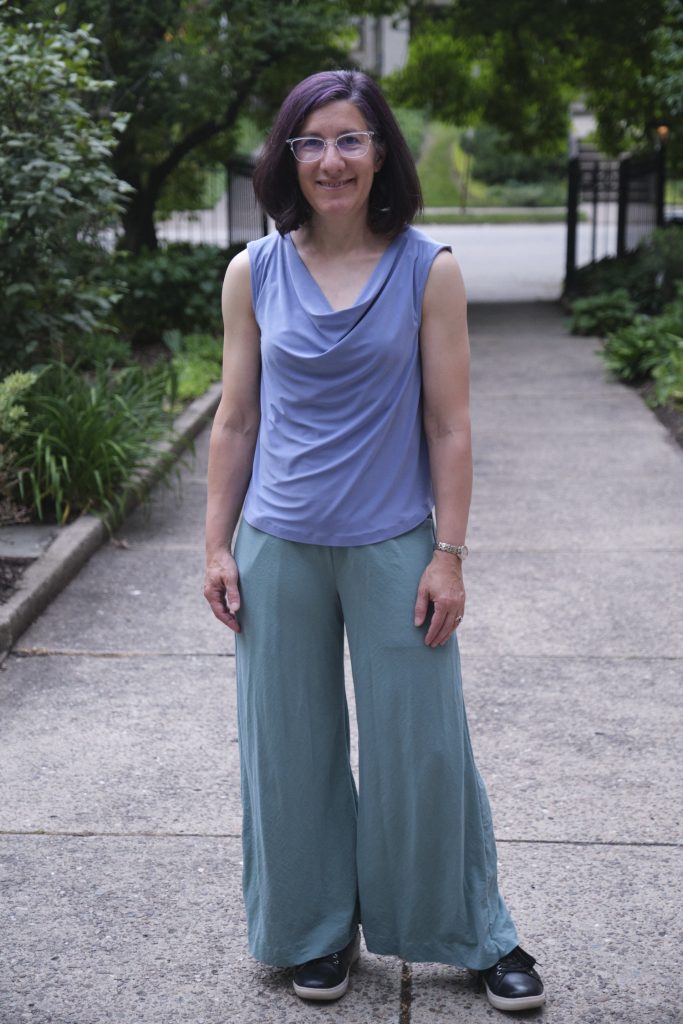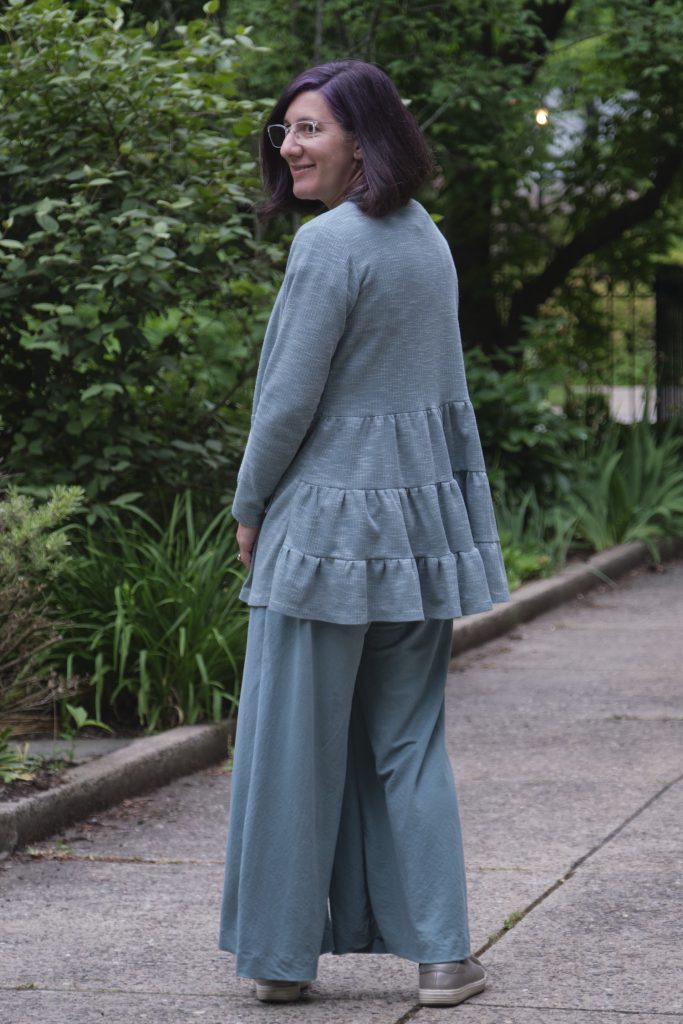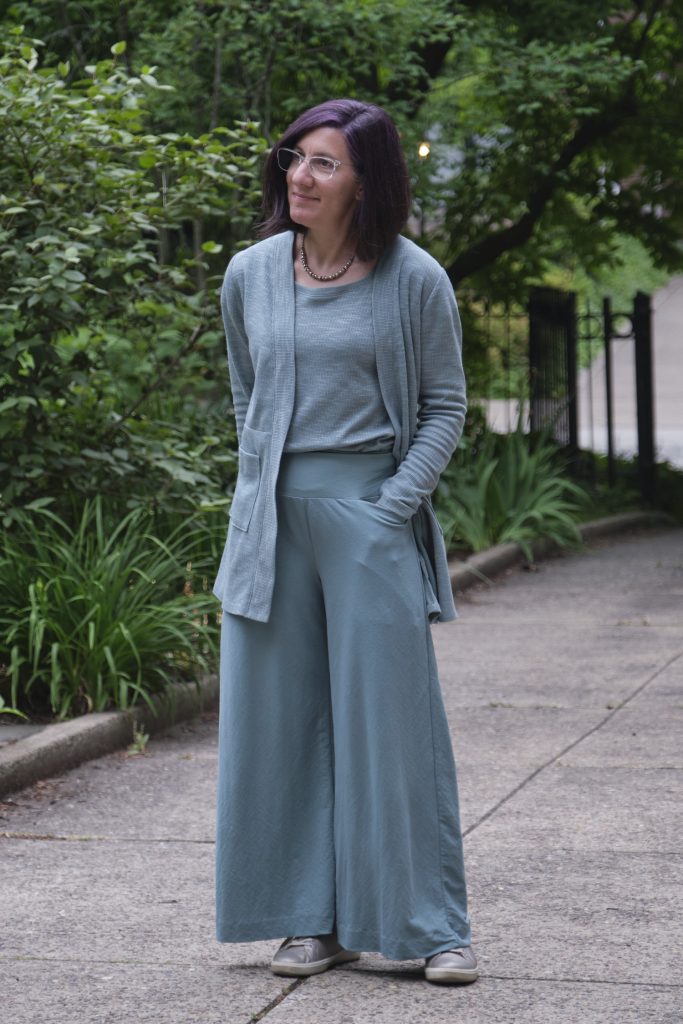The Ellie & Mac Felicia Custom-Fit Cup Size Dress Pattern is super cute, but takes some time to make, especially if you include the flutter and ruffle options. It offers a nice custom fit by providing cup-size options and bodice darts. This isn’t all that critical for those with my proportions, especially when I sew with light, stretchy fabrics. However, I do think the bodice pattern will be nice for sewing heavier knits. I sewed my dress with a lightweight and drapey rayon spandex deadstock fabric form Califabrics.com. The lightweight fabric drapes quite nicely for ruffles and flutters, so I took advantage of that.

I made the high v-neck option with the long flutter sleeve. I made a couple of deviations from the pattern for both the neck and the sleeve. When I started basting together the v-neck, following the pattern instructions, I found that the acute angle that is marked for the v-neck back is too sharp an angle to smoothly match the high v-neck in the bodice. After trying unsuccessfully to make it work a couple of times, I cut a new neck band and cut the angle at 90 degrees. This lined up with the bodice perfectly and lies very smooth. (From looking at photos others have posted, it looks like others may have had this problem too and would benefit from a 90 degree cut.) The other change I made was to fold the arm facings in half so that I when I top stitched them down they have a finished edge and do not need to be trimmed. This might not work with heavier fabric but worked really well with my light-weight fabric.
I added work for myself by adding a ruffle to the bottom of the skirt. I cut the skirt mini-skirt length and cut a 4.25″ x 140″ ruffle, as suggested in the add-on ruffle tutorial. (I’m 5’2″ so miniskirt plus ruffle comes to just above my knee.)I hemmed the ruffle and gathered the ruffle in four sections before attaching it to the bottom of the skirt. The ruffle looks really nice, but it was time consuming to do all that gathering and get it even, especially using such stretchy fabric.

Because I refuse to sew dresses without pockets, I added inseam pockets to the sides of the skirt and secured them at the waist. I view this step as critical, but it did add to the time needed to complete this project. In addition, once I had the whole thing sewn together I realized that the fabric was so stretchy that the bodice had “grown” a bit from the weight of the skirt — and that was before I put anything into the pockets. The clear elastic didn’t help, and was a bit itchy around my waist. I ended up cutting off the skirt removing about an inch of fabric from both the bottom of the bodice and the top of the skirt, and then reattaching them with a 1.5-inch waistband in between, cut with a smaller diameter than the bodice so that it would stretch around my waist. I lined the waistband with athletic knit to add some stability to the waistband. This looks and feels a lot better, and I can actually put things in my pockets now too.

Overall, I’m pleased with the results, even if annoyed by the process. The ruffle at the bottom looks great with the flutter sleeves. The rayon spandex is soft and breathable and very comfortable to wear, but given my feelings about pockets, I will think twice before using it for anything other than a top in the future. I was very happy to figure out how to get the v-neck to lie flat and to recover from the growing fabric problem by adding a lined waistband.



















